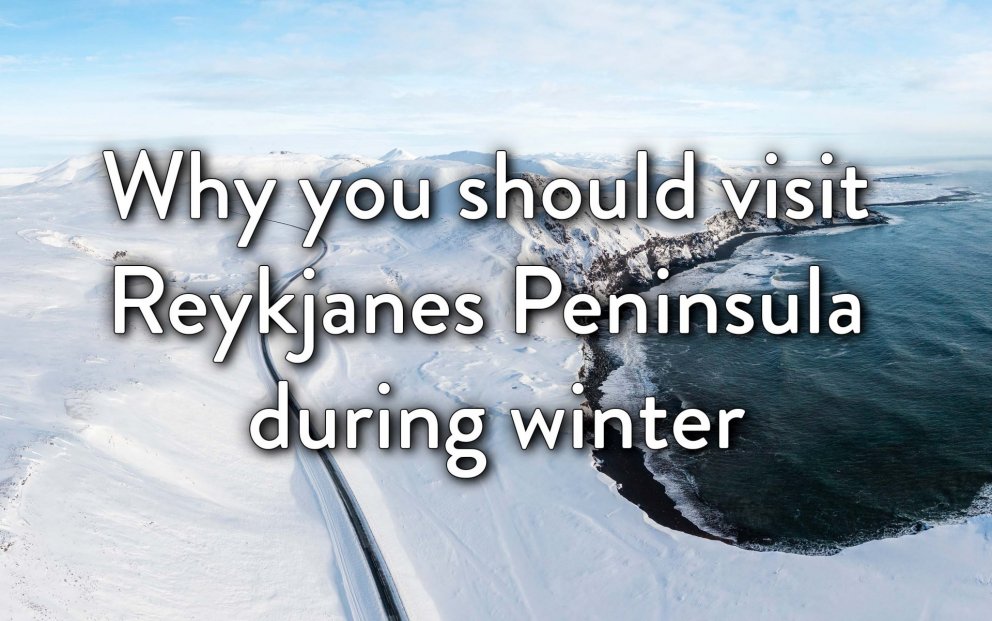Why you should visit the Reykjanes Peninsula during winter
Iceland’s a year-round destination and the same can be said for the Reykjanes peninsula. If you’re seeking inspiration for a winter trip that isn’t the more usual winter sun, ski break or trip to the Christmas markets, why not consider this dramatic mid-Atlantic destination? Here’s why we think you should visit the Reykjanes Peninsula during winter, but the best way of understanding why it’s so special is to come over and see for yourself.
It’s enchanting under a dusting of snow
Much of the Reykjanes peninsula consists of rugged lava fields punctuated by volcanic cones andlined with unspoilt black sand beaches. The peninsula has a stark yet captivating beauty, whether you find yourself straddling the plate boundary at the Bridge between Continents or marvelling at the steam rising from the ground at Gunnuhver, where you’ll find the largest mud pot in Iceland. But under a dusting of snow, the dark rock really pops, giving the place an extraordinary beauty.
Accommodation and car rental are cheaper in low season
Fewer people visit Iceland in winter and fewer still base themselves on the Reykjanes peninsula. If you’re happy to buck the trend and visit outside of the peak summer season, you’ll be rewarded with cheaper rates at hotels and guest houses – it’s a simple case of supply and demand. There are great deals to be found on car hire too. There’s typically a wider choice of vehicles, particularly if you’re booking last minute when in summer some popular categories sell out, and rates are competitive. With winter tyres to help with slippery roads and emptier roads, this is a great time for intrepid, value-conscious travellers to get behind the wheel.
You’ll have the pick of the slots at the Blue Lagoon
The most famous and most popular visitor attraction on the Reykjanes peninsula is undoubtedly the Blue Lagoon. This fabulous luxury spa is world-renowned and an unmissable part of any itinerary. The warm water makes a soak just as pleasant in colder weather as it is in the height of summer; they’ve even designed it with a swim-out route so you don’t get cold walking from the changing room to the water. In peak season, you’ll have to plan your schedule well in advance as slots often sell out. In winter, you’ll be able to be more flexible, enabling you to pick a dry, sunny day for your visit or a slot which fits well with your incoming or outgoing flight.
You might see the Northern Lights
For many tourists to Iceland, the main reason for coming in winter is the opportunity to witness one of nature’s greatest spectacles: the Northern Lights. The Reykjanes peninsula is the ideal place to go on a DIY aurora hunt, with plenty of accessible places that face the northern sky. As with anywhere else in the Arctic, you’ll still need to be blessed with clear skies and strong aurora activity, but the area’s abundant dark sites make this a smart choice. Best of all, you won’t have to travel far when you’re ready to go back to your overnight accommodation as driving distances aren’t huge.

